Green tea, one of major types of Chinese tea, is made from new leaves or buds of tea trees. Green tea is not fermented before it is dried. After fixing, rolling and drying, green tea preserves the green color of the fresh tea leaves. Drinking green tea may help you to prevent cancer, lower the blood lipids, lose weight, and get over the nicotine urge.
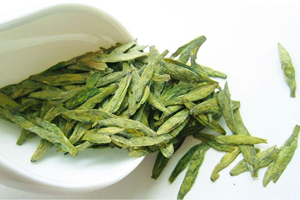
West Lake Dragon Well Tea, also known as Xihu Longjing, is one of top 10 Chinese teas. It is grown on the mountains surrounding Xihu Longjing Village, Hangzhou City, Zhejiang Province, hence the name. The use of the tea can be dated back to more than 1,200 years ago. Emperor Qianlong of the Qing Dynasty highly praised the tea when visiting West Lake in Hangzhou City. West Lake Dragon Well tea is honored as “the queen of tea”, because it contains abundant amino acids, catechins, chlorophyll, and vitamin C. Drinking this tea may help you to clear heat, promote diuresis, produce saliva, quench thirst, lower neutral fat, and so on.
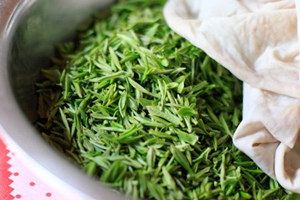
The history of Biluochun Tea can date back to more than 1,000 years ago. It is grown on the Eastern Dongting Mountain and the Western Dongting Mountain (now Wuzhong District, Suzhou) of Taihu Lake, Wu County, Suzhou City, Jiangsu Province. It was listed as a tribute tea in the Tang Dynasty. Tea caffeine excites the central nervous system, thus helping you to invigorate minds, increase thinking, eliminate fatigue, and increase efficiency.
Huangshan Maofeng Tea is grown in Huangshan City, Anhui Province, China. The use of the tea dates back to more than 1,200 years ago. The tea is rich in antioxidants that can help you to reduce incidences of cancer. It contains anti-aging agents, which helps you to reduce the effects of aging. It can also help you to lose weight and prevent obesity, diabetes and high blood pressure.
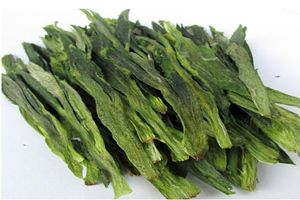
Taiping Houkui Tea is one of traditional Chinese teas grown in Huangshan District (formerly Taiping County), Huangshan City, Anhui Province, China. In 2004, it was highly praised by the tea expert team and was honored as “the king of green tea” at the International Tea Show. It contains more than 500 kinds of ingredients including caffeine, tea polyphenols, proteins, amino acids, sugars, vitamins and organic acids as well as 28 inorganic nutrients such as potassium, sodium, magnesium and copper.
Lu’an Melon Seed Tea is mainly grown in the area of Dabie Mountain, Lu’an City, Anhui Province, China. There are many types of leaf teas in the world, but Lu’an Melon Seed Tea is the only sessile tea without buds that made only from single leaves. It can not only help you to quench thirst but also refresh your mind instantly and improve digestion.
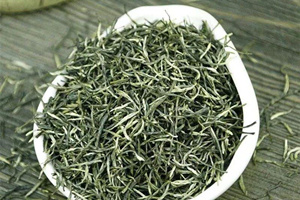
Xinyang Maojian Tea is mainly produced in Shihe District, Pingqiao District and Luoshan County. The three above-mentioned regions are all in Xinyang City, Henan Province, China. As one of the famous specialties of Henan Province, it won the gold medal with Kweichow Moutai at the Panama International Exposition in 1915. Xinyang Maojian Tea is rich in proteins, amino acids, alkaloids, tea polyphenols, organic acids, aromatic substances, vitamin A, B1, B2, C, K, P and PP, and water-soluble minerals. So, it can help quench thirst, clear away heat, improve eyesight, and dissolve fat.
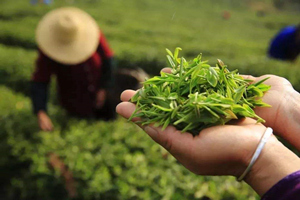
Lushan Yunwu Tea, a tribute tea in the Song Dynasty, is grown on Lushan Mountain, Jiujiang City, Jiangxi Province, China. It is said that many scholars and poets gathered in Lushan Mountain in the Tang Dynasty, thereby promoting the planting of tea trees there. Lushan Yunwu Tea is rich in tannins, aromatic oils and vitamins, which are effective for improving digestion, removing toxins, and preventing gastrointestinal infections. With a strong, delicate fragrance, it can help you to relieve diarrhea.
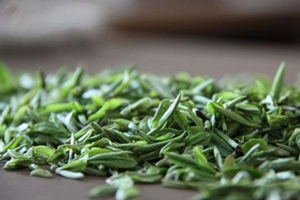
Nanjing Rain Flower Tea is a special regional tea grown in Nanjing City, Jiangsu Province, China. It is rich in tea polyphenols, which can inhibit the development of bacteria. Vitamin C and vitamin E in Nanjing Rain Flower Tea can block the synthesis of carcinogens-nitrosamines, thereby achieving anti-cancer effects.
Green tea is honored as a “national drink” in China. A large number of modern scientific studies have shown that green tea contains abundant biochemical ingredients that are closely related to human health. The main components of green tea with pharmacological effects are tea polyphenols, caffeine, lipopolysaccharide, and theanine. The specific health effects of drinking green tea are as follows:
Green tea is rich in tea polyphenols, which have strong antioxidant and physiological activities and are scavengers of human free radicals.
It helps you to suppress cardiovascular diseases. In addition, tea polyphenols have important effects on human fat metabolism.
Tea polyphenols can block the synthesis of various carcinogens, such as ammonium nitrite. It has the effects of directly killing cancer cells and improving the body’s immunity.
Tea polyphenols have an obvious inhibitory effect on pathogenic bacteria.
Tea polyphenols are a water-soluble substance. Washing your face with green tea water can remove the greasiness of the face and condense pores on the face. It has the effects of disinfection, sterilization, anti-aging of the skin, thereby reducing the damage to your skin by ultraviolet radiation in sunlight.
The caffeine in green tea has a refreshing effect, because it can stimulate the central nervous system of the human body and enhance the exciting process of the cerebral cortex.
Caffeine in green tea can also eliminate excess lactic acid in the urine, which helps the body eliminate fatigue as quickly as possible.
Green tea contains powerful antioxidants and vitamin C, which not only removes free radicals from the body, but also secretes hormones that fight stress.
Green tea is rich in fluorine and vitamin C, which can inhibit the reduction of human calcium and reduce the opacity of eye crystals.
The caffeine in green tea can help increase the secretion of gastric juice and improve digestion. In addition, green tea is rich in catechins, which can help you to reduce abdominal fat.
